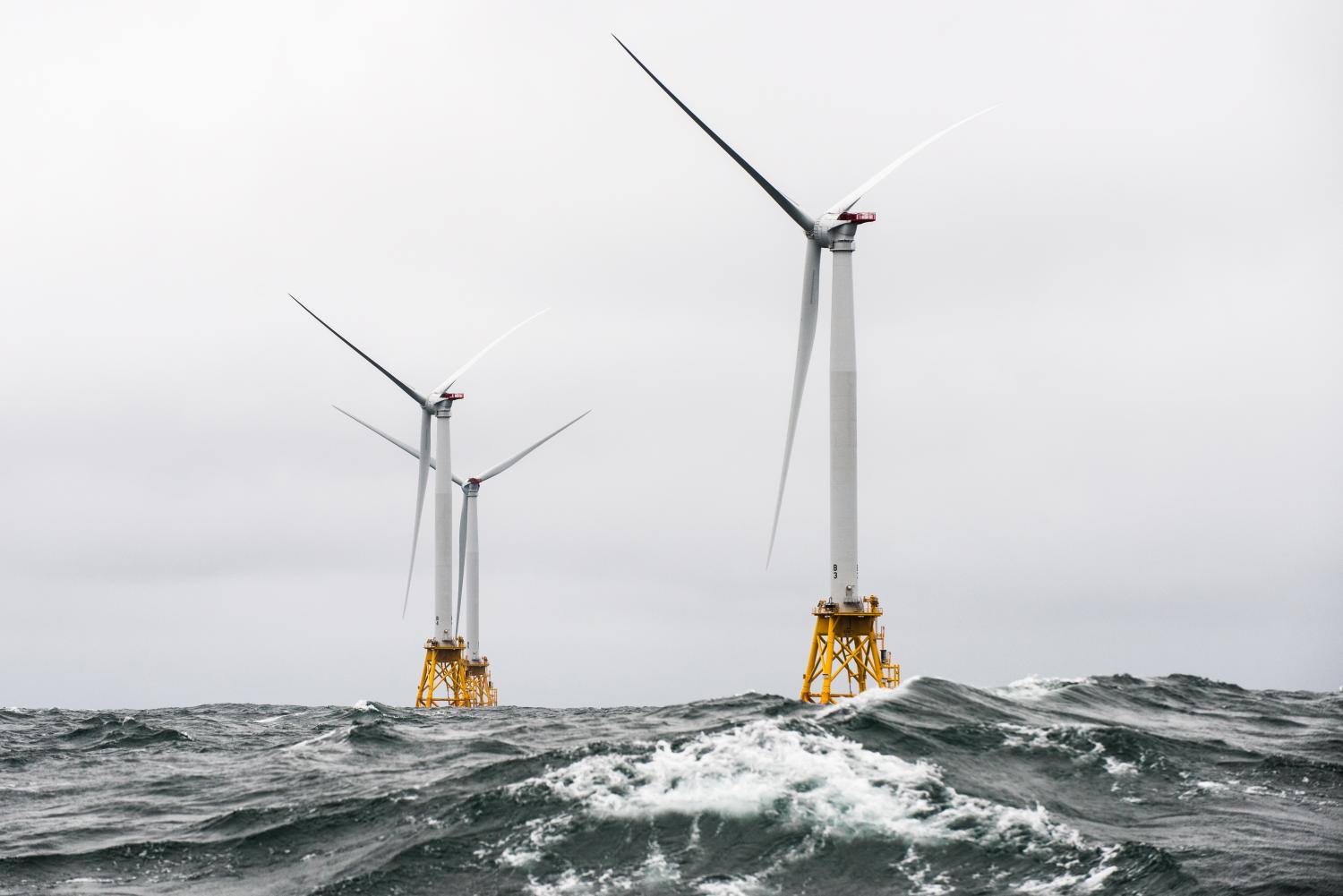
The business community is getting help from unexpected quarters when it comes to investments in renewables: the U.S. Energy and Interior departments.
The year 2015 marked a milestone in the long-running relationship between business stakeholders and U.S. energy policy. In that year, the U.S. EPA launched the carbon-reducing Clean Power Plan and President Barack Obama signed the nation on to the Paris Agreement on climate change. Those two important steps were made possible by leading U.S. companies that pushed the market for more investments in renewables.
Much has changed since then, but the demand for renewables by U.S. businesses, large and small, is stronger than ever. Far from a feel-good exercise, clean power is a matter of bottom-line competition and core brand reputation. And, oddly enough, the business community is getting help from unexpected quarters: the U.S. Departments of Energy and the Interior.
The renewables revolution is just getting started
Earlier this week, the American Society of Mechanical Engineers (ASME) pitched its upcoming Offshore Wind Summit in Boston by taking note of the latest figures for electricity production in the U.S. Once dominated by coal, the nation’s power plants have been transitioning to natural gas and renewables.
Last month marked a turning point. The U.S. Energy Information Agency projected that renewables—including hydropower, biomass and geothermal, as well as wind and solar—would outpace coal for the first time ever. According to EIA, the trend could last into May.
The rapid pace of change has been achieved solely by virtue of land-based renewables. The U.S. has enough offshore wind resources to generate almost double the electricity that it uses today, without any help from other renewable sources. However, just five offshore turbines are in commercial operation today, in Rhode Island (pictured above). In other words, the U.S. renewable energy revolution has been happening with one hand tied behind its back.
Offshore wind: The gloves come off
Both technological challenges and partisan politics blocked the development of offshore wind during the Obama administration, with the exception of Rhode Island’s lone wind farm.
Now, just a few years later, the other offshore wind hand is finally free. Hundreds of offshore turbines are already slated for the Atlantic Coast, thanks to the Interior Department’s ongoing offshore lease program. Interior has also begun a lease program for the more challenging waters of the Pacific coast, where turbines must be floated rather than planted on the ocean floor.
In addition, last year the Energy Department launched a national wind energy hub to accelerate the U.S. wind industry, both onshore and off. The agency tapped New York state to lead the new National Wind R&D Consortium, partly on account of New York’s ambitious new offshore wind plan.
That may seem at odds with White House energy policy—and it is. Nevertheless, current Energy Department chief Rick Perry has consistently championed the same “all of the above” energy strategy pursued by the Obama administration. That includes wind power, which is not surprising, considering that the former Texas governor presided over the Lone Star State’s emergence as the nation’s onshore wind energy leader.
Pushing renewable energy supply chain
With the U.S. offshore wind industry in full acceleration mode, the missing link is a supply chain that can keep up with demand. ASME’s Offshore Wind Summit, slated for June 12 in Boston, is designed to help jumpstart the supply chain, with a focus on the northeast Atlantic coast.
ASME is calling in the heavy hitters for the conference, including the “world’s largest offshore wind turbine manufacturers,” including GE Renewable Energy, MHI-Vestas Offshore Wind and Siemens-Gamesa Renewable Energy.
Interestingly, the offshore wind industry is also beginning to get a hand from the oil and gas supply chain. Many offshore skills, and some of the equipment, are source-neutral. Just last week, the important Oil Technologies Conference in Houston turned heads because some exhibitors were also pitching offshore wind business, and the speaker’s list included a keynote from New York state’s renewable energy agency.
U.S. Interior Department: Bullish on offshore wind
That leads to another interesting feature of the of the ASME conference: One of the keynote speeches will be delivered by Dr. Walter Cruickshank, the acting director of the U.S. Bureau of Ocean Energy Management (BOEM).
BOEM is the agency responsible for all lease activity on the Outer Continental Shelf, which until recently meant oil and gas almost exclusively. Now that it has absorbed responsibility for leasing offshore wind farms, the agency has been moving in force on that front as well.
According to ASME, Dr. Cruickshank will “discuss the future of Offshore Wind in the United States including the fifteen BOEM-approved offshore wind leases and expectations for the future,” with a focus on “the supply chain opportunities these projects are expected to generate,” along with additional opportunities his agency anticipates over the next ten years.
The Atlantic coast is just the start
The new burst of offshore wind activity it just one indication that the partisan obstacles to renewables are breaking down. ASME itself is a good example. The trade organization is hardly a hotbed of leftist thinking. Nevertheless, progress in the U.S. offshore wind industry provided the motivation for ASME to stage its second—and probably not the last—conference on the topic.
After all, the organization’s first international offshore wind conference took place just last November, in California. Among many technical areas covered during the event, ASME was already looking forward to taking on the challenges of floating wind turbines on the Pacific coast.
Image credit: U.S. Department of Energy/Flickr

Tina writes frequently for TriplePundit and other websites, with a focus on military, government and corporate sustainability, clean tech research and emerging energy technologies. She is a former Deputy Director of Public Affairs of the New York City Department of Environmental Protection, and author of books and articles on recycling and other conservation themes.














